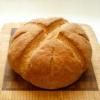
Mill residue in flour, and flour oxidation
Would the action of a fast spinning electric impact mill increase initial oxidation in the flour? I believe so, but I have no idea about how significant this increase might be. If someone has an idea, please explain the reasoning behind it.
Also, I just purchased a Wonder Jr. grain mill and I am concerned about stone residue in the flour. I can feel and hear the stones grinding against each other, very hard, when I set the mill to produce fine flour.
I am not very happy with this mill for this and a number of other reasons, and I am considering returning it. My dilemma is what grain mill would be better than this one in regard to flour finesse, and amount/type of unwanted grinding residue.
Initially, I chose the Wonder Jr. because of its versatility in grinding both seeds and nuts. Now I am considering substituting this one with the electrical impact Wonder Mill. Would the mechanism of this impact mill increase oxidation and metal residue in my flour more than the Wonder Jr., or would it be better in any of these regards? Which mill produces the least harmful amount/type of residue?
p.s.
The German Wolfgang/Komo type, besides being pricier, scare me away because their grinding stones contain Aluminum Oxide. Also I don't want to buy one of those large mills that can be connected to a bicycle because I don't have the space for them right now.
Your advice and opinions are welcomed.


I own a Schnitzer grain mill and I've spent time at a local windmill where they regularly mill flour. I think you may be over-worried in regards to residue. The 2 stones involved, static bedstone below and spinning runerstone above should never touch otherwise they would wear down pretty dramatically and pretty quickly, whether this be in a windmill or in a counter top grain mill. I'm sure therefore that the machine design will take this into account. Like yours, I get different sounds from the machine depending on the level of fineness I select, more noise at the finer setting. However, I still don't believe that this is the stones grinding against each other. For one, the machines wouldn't last a minute and the manufacturer would be plagued with returns and for another you would surely see stone dust pouring out of your chute when it runs without any grains. By way of boosting confidence, put your mill on the most coarse setting (great for creating chopped rye btw !) and note that you still hear a lot of noise. For what is essentially just a motor spinning a disk, that's probably more noise than one would expect so I would guess there is more to the entire mechanism involved and other "bits" are making the noise.
As for oxidation I couldn't comment but on a more general view I would say that milling shouldn't be done at hyper speeds but rather a more slow and gentle speed. Milling can heat up the flour produced which can affect the flour but with a domestic mill that's unlikely to be a problem so long as its not running at hyper speed and provided you're not milling for very long continuous periods. I fully expect my grain mill to last many many years, at least 5, before I even start to think about needing to change the stones. Others who have owned Schnitzer's confirm they haven't needed to change stones for many years despite constant use. In the end grinding and milling is an ancient technique spanning back 1000s years and we humans have lived very well on it so I wouldn't be worried at all about it.
GL. EP
I don't want to discourage people from that product so I am not posting a bad review in detail, but the stones in this mill touched each other all the time, no matter how I would loosen them up. That was part of the design. The instructions stated to tighten them up against each other up to the point they barely touch, and this was unattainable with it since they were in contact all the time.
So I returned this mill and I am still looking for on. I would like to thank both of you guys for your explanations and suggestions.
I have a question for ElPanadero: The product description of a schnitzer I found online advertised it as a real stone mill. Does this imply that the stones are 100% natural or are they a composite of natural granules bound synthetically? What kind of material are your Schnitzer's stones made of?
Hi Sonika
The website states the following for my Vario mill:
So the stones are Corundum in ceramic.
There are very few manufactures of grinders with genuine granite stones, maybe only one, Salzburg Mills if they are still going. Here's some info on Corundum stones:
What are corundum/ceramic stones?
While granite stones are the most natural milling stones available and have been used for hundreds of years, today corundum/ceramic stones are commonly used by grain mill manufacturers. Their advantage is their low cost compared to natural granite stones. Additionally, they are harder than granite, self-sharpening and last approx. 15-20 years, depending on use. Corundum is the second hardest naturally occurring mineral after diamonds. Both corundum and ceramic are natural materials that are also referred to as clay or alumina (dioxide) and are made without artificial additives. The milling stones are created under high pressure when the corundum and ceramic mass is pressed into a casting mould and subsequently burned in a furnace at a very high temperature of around 1300 degrees.
Hope this helps
Cheers
EP
Thank you very much!